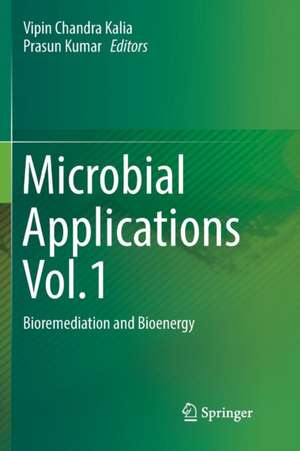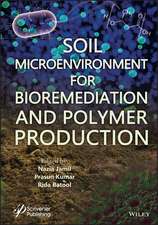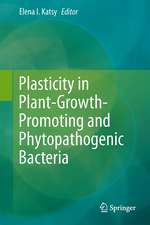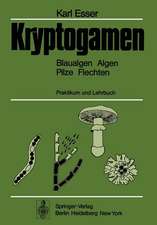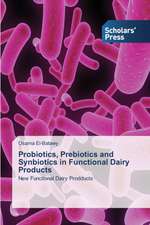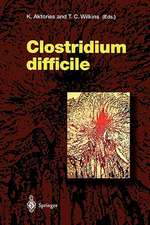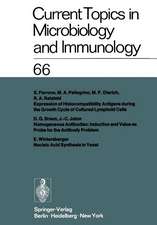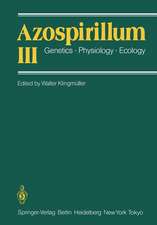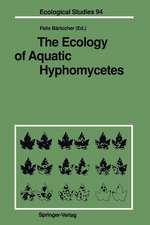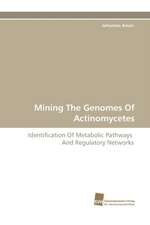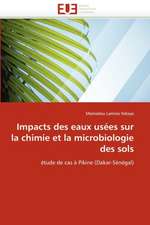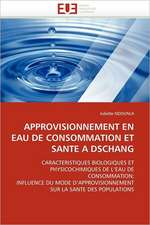Microbial Applications Vol.1: Bioremediation and Bioenergy
Editat de Vipin Chandra Kalia, Prasun Kumaren Limba Engleză Paperback – 18 iul 2018
In addition, the book illustrates how the metabolic abilities of microorganisms can be used in microbial fuel-cell technologies or for the production of biohydrogen. It inspires young researchers and experienced scientists in the field of microbiology to explore the application of green biotechnology for bioremediation and the production of energy, which will be one of the central topics for future generations.
| Toate formatele și edițiile | Preț | Express |
|---|---|---|
| Paperback (1) | 946.72 lei 6-8 săpt. | |
| Springer International Publishing – 18 iul 2018 | 946.72 lei 6-8 săpt. | |
| Hardback (1) | 952.89 lei 6-8 săpt. | |
| Springer International Publishing – 10 apr 2017 | 952.89 lei 6-8 săpt. |
Preț: 946.72 lei
Preț vechi: 1154.54 lei
-18% Nou
Puncte Express: 1420
Preț estimativ în valută:
181.15€ • 189.65$ • 149.89£
181.15€ • 189.65$ • 149.89£
Carte tipărită la comandă
Livrare economică 07-21 aprilie
Preluare comenzi: 021 569.72.76
Specificații
ISBN-13: 9783319849577
ISBN-10: 3319849573
Ilustrații: XII, 331 p. 47 illus., 41 illus. in color.
Dimensiuni: 155 x 235 mm
Greutate: 0.48 kg
Ediția:Softcover reprint of the original 1st ed. 2017
Editura: Springer International Publishing
Colecția Springer
Locul publicării:Cham, Switzerland
ISBN-10: 3319849573
Ilustrații: XII, 331 p. 47 illus., 41 illus. in color.
Dimensiuni: 155 x 235 mm
Greutate: 0.48 kg
Ediția:Softcover reprint of the original 1st ed. 2017
Editura: Springer International Publishing
Colecția Springer
Locul publicării:Cham, Switzerland
Cuprins
Part. I.Bioremedation.- 1. Phycoremediation: An eco-friendly approach to solve water pollution problems.- 2. Microbial conversion of waste and surplus materials into high-value added products: The case of biosurfactants.- 3. Oil biodegradation.- 4.Bacterial decolourization, degradation and detoxification of azo dyes: an ecofriendly approach.- 5.Biological significance of degradation of polyhydroxyalkanoates.- 6. Microbial Biofouling: A possible solution to treat harmful microorganisms in ship ballast water.- Part II. Bioenergy.- 7. Xylanase- from paper to fuel.- 8. Microbial Fuel Cell technology: Technical challenges and Economic fusibility.- 9. Biohydrogen production: Integrated approaches to improve the process efficiency.- 10. Valorization of olive mill by-products towards sustainable biofuels and bio-based products.- 11. Algal biotechnology: the potential future fuel and prospects.- Part III. Future Perspectives.- 12. New Generation DNA Sequencing (NGS): Mining for genes andthe potential of extremophiles.- 13. Impact of Next Generation Sequencing technology in plant microbe interaction study.- 14. An overview of Next-Generation Sequencing (NGS) technologies to study the Molecular Diversity of Genome.- 15. Marine polyextremophiles and their biotechnological applications.
Notă biografică
Dr. Vipin Chandra Kalia is presently working as Chief Scientist at Microbial Biotechnology and Genomics, CSIR-Institute of Genomics and Integrative Biology, Delhi. He is a Professor of Academy of Scientific and Innovative Research (AcSIR), Delhi. He obtained his M.Sc. and Ph.D. degrees in Genetics from the Indian Agricultural Research Institute, New Delhi. He has been elected as: (1) Fellow of the Association of Microbiologists of India (FAMI), (2) Fellow of the National Academy of Sciences (FNASc), and (3) Fellow of National Academy of agricultural Sciences (FNAAS). His main areas of research are microbial biodiversity, genomics, and evolution, bioenergy, biopolymers, antimicrobials, quorum sensing, and quorum quenching. He has published 101 papers in scientific journals such as (1) Nature Biotechnology, (2) Biotechnology Advances, (3) Trends in Biotechnology, (4) Critical Reviews in Microbiology, (5) Bioresource Technology, (6) International Journal of Hydrogen Energy, (7) PLoS ONE, (8) BMC Genomics, (9) Gene, and (10) Annual Review of Microbiology. His works have been cited 3558 times with a h index of 31 and an i10 index of 66. He has edited 3 books: Quorum sensing versus quorum quenching: A battle with no end in sight (2015, Springer India), Microbial Factories Vol 1 and 2 (2015). He is presently the editor in chief of the Indian Journal of Microbiology and Editor of (1) PLoS ONE, (2)Journal of Microbiology & Biotechnology (Korea), (3) Applied Biochemistry & Biotechnology (USA), (4) International Scholarly Research Notices (Energy), (5) Dataset Papers in Science (Microbiology), and (6) Journal of Molecular and Genetic Medicine. He is a life member of the following scientific societies: (1) Society of Biological Chemists of India (2) Society for Plant Biochemistry and Biotechnology, India; (3) Association of Microbiologists of India; (4) Indian Science Congress Association; (5) BioEnergy Society of India, and (6) the Biotech Research Society of India (BRSI). He is also a member of the American Society for Microbiology.
Dr. Prasun Kumar is a Ph.D. in Biotechnology from Savitribai Phule Pune University, Maharashtra, INDIA. He has worked as a Research Fellow at Microbial Biotechnology and Genomics, CSIR-Institute of Genomics and Integrative Biology, Delhi. His main areas of research are Microbial biodiversity, Bioenergy, and Biopolymers. He has published 19 papers in Scientific journals such as (1) Biotechnology Advances, (2) Bioresource Technology, (3) International Journal of Hydrogen Energy, and (4) Microbial Ecology. He has authored 4 book chapters. His works have been cited 490 times with an h index of 14 and an i10 index of 17. He is a life member of the following Scientific societies: (1) Association of Microbiologists of India; and (2) Indian Science Congress Association. He is serving as Editor to: (1) International Journal of Clinical & Medical Allergy (IJCMA) [US] and (2) Insight Medical Publishing Journals [UK].
Dr. Prasun Kumar is a Ph.D. in Biotechnology from Savitribai Phule Pune University, Maharashtra, INDIA. He has worked as a Research Fellow at Microbial Biotechnology and Genomics, CSIR-Institute of Genomics and Integrative Biology, Delhi. His main areas of research are Microbial biodiversity, Bioenergy, and Biopolymers. He has published 19 papers in Scientific journals such as (1) Biotechnology Advances, (2) Bioresource Technology, (3) International Journal of Hydrogen Energy, and (4) Microbial Ecology. He has authored 4 book chapters. His works have been cited 490 times with an h index of 14 and an i10 index of 17. He is a life member of the following Scientific societies: (1) Association of Microbiologists of India; and (2) Indian Science Congress Association. He is serving as Editor to: (1) International Journal of Clinical & Medical Allergy (IJCMA) [US] and (2) Insight Medical Publishing Journals [UK].
Textul de pe ultima copertă
This contributed volume sheds new light on waste management and the production of biofuels. The authors share insights into microbial applications to meet the challenges of environmental pollution and the ever-growing need for renewable energy. They also explain how healthy and balanced ecosystems can be created and maintained using strategies ranging from oil biodegration and detoxification of azo dyes to biofouling.
In addition, the book illustrates how the metabolic abilities of microorganisms can be used in microbial fuel-cell technologies or for the production of biohydrogen. It inspires young researchers and experienced scientists in the field of microbiology to explore the application of green biotechnology for bioremediation and the production of energy, which will be one of the central topics for future generations.
In addition, the book illustrates how the metabolic abilities of microorganisms can be used in microbial fuel-cell technologies or for the production of biohydrogen. It inspires young researchers and experienced scientists in the field of microbiology to explore the application of green biotechnology for bioremediation and the production of energy, which will be one of the central topics for future generations.
Caracteristici
Broadens understanding of current microbial applications Shows reader hands-on experience of waste management Maximizes readers' insight into biofuel development
